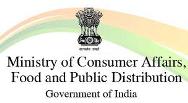
The Department of Consumer Affairs, Government of India in collaboration with IIT (BHU), launched Dark Patterns Buster Hackathon 2023 here today. The deliverables of the Hackathon will be to design & prototype innovative app or software based solutions such as;
- browser extensions,
- plugins,
- add-ons,
- mobile applications etc. that can detect the use, type and scale of dark patterns for e-Commerce platforms.
The launch event was attended by law Institutes, Higher Educational Institutes, experts from national and International Academia, students, various companies and e-commerce platforms in both physical and online mode.
While preparing the deliverable the participants are expected to focus on key areas such as; pattern detection accuracy, User-Friendly Extension, Pattern Versioning, Generative AI, Repository Management, Data Collection with Privacy Protection, Crowd sourced Pattern Identification, Cross-Browser Compatibility, and Artificial Intelligence for Detection and Performance Optimization. The participants will be evaluated on following few of the many criteria; Innovation, Demonstration of the solution as a turn-key solution, User Interface & User Experience, Accuracy & Reliability, Adherence to Functionalities & Features, Privacy & Compliance etc.
The Hackathon is divided into following four stages/rounds:
- Round 1- Registration of participant Teams and Host Institutes
- Round 2- Intra Institute DPBH 2023 to be organized
- Round 3- Inter Institute DPBH 2023 to be organized and
- Round 4- Distribution of awards and prizes on World Consumer Rights Day
- The winners will be rewarded with a Certificate of Achievement and the Prize money in the following order; 1st prize of INR 10 lacs, 2nd prize of INR 5 lacs, 3rd prize of INR 3 lacs, 4th prize of INR 2 lacs and 5th price of INR 1 lac respectively.
The objective of the initiative is to provide protection to consumers from all types of unfair trade practices.
In line with the above initiative, Department had published draft Guidelines for Prevention and Regulation of Dark Patterns on 07.09.2023 seeking public comments/feedback/suggestions. A time of 30 days (until 5th October 2023) was given for submitting the suggestions.
Department received comments/suggestions from various individuals, law firms, National Law Universities, Government Organizations, Voluntary Consumer Organizations, and Trade Associations like NASSCOM, FICCI and E-Commerce Platforms.
The initiative taken by the Department towards drafting of guidelines and identification of dark patterns was appreciated in general by the industry stakeholders. Besides there were various suggestions for including certain new dark patterns, few more illustrations and modification of definitions of few existing dark patterns in the guidelines.
Few of the comments/suggestions being considered for inclusion in the revised guidelines are provided below:
- Wadhwani Institute of Technology and few individuals (Smt. Kosha Doshi, Sh. Sanju Ahuja, Sh. Ratul Aich, Smt. Paneri Ankit etc.) have suggested to include “Trick Question” as a dark pattern, which briefly can be understood as:
“Trick Question” is a dark pattern, which means the deliberate use of confusing or vague language; in order to misguide or misdirect a user.
Illustration:
While giving a choice to opt, “Do you wish to opt out of receiving updates on our collection and discounts forever?” using phrases like, “Yes. I would like to receive updates” and “Not Now”, instead of the option, “Yes.”
- Flipkart and few individuals (Sh. Ashwin Irudayarajan, Sh. Vaibhav Verma, Sh. Adwit Bhosale) have suggested including “Saas Billing” as a new dark pattern, which temporarily can be defined as:
“Saas Billing” is a process of generating and collecting payments from consumers on a recurring basis in a software as a service (SaaS) business model by exploiting positive acquisition loops in recurring subscriptions to get money from users.
Illustration:
No notification is given to the user when free trial is converted to paid
- Indian Music Industry has recommended including “Rogue Malwares” as a new dark pattern.
“Rogue Malwares” is a dark pattern using a ransomware or scareware to mislead/trick user into believing there is a virus on their computer and aims to convince them to pay for a fake malware removal tool that actually installs malware on their computer.
Illustration:
When a pirating website/app promises the consumer to provide free content (audio/audio-visual/others) but actually leads to an imbedded malware when the link is accessed
- Nasscom, Asia Internet Coalition, Indiatech.org, Nalsar University of Hyderabad, Koan Advisory Group, have suggested modifying definitions of some existing dark patterns like “nagging”, “confirm shaming” etc.
- Koan Advisory Group, IBHA, IAMAI, Asia Internet Coalition, student from MNLU Mumbai have suggested deleting/modifying definition of “disguised advertisement” which is being considered to be modified to a certain extent by the Department.
- Law firm such as Panag & Babu, Pranava Institute, Smt. Radhika Jhalani @ SFLC, Advocate Zyfern Joseph, Smt. Paneri Ankit have suggested adding a new dark pattern to deal with issues of privacy suckering/forced personal data sharing, which is proposed to be incorporated in the revised guidelines as illustrations in “Forced Action”.
Illustrations:
- forcing a user to share personal information linked with Aadhar or credit card bureau records, even when it is not a credit product
- forcing a user to share details of his contacts or social networks in order to access products or services purchased or intended to be purchased by the user.
- Making it difficult for consumers to understand and alter their privacy settings, thereby encouraging them to give more personal information than they mean to while making the intended purchase
- FICCI has recommended adding the statement, “These Illustrations are providing guidance and any illustration provided herein should neither be regarded as an interpretation of law nor be treated as a binding opinion/decision. Different facts or conditions may entail different interpretations” on top of the Annexure 1 i.e. list of Specified Dark Patterns.
- Few other suggestions received by the Department which are under consideration to be included in the final guidelines for Prevention and Regulation of Dark Patterns are:
- Addition of few more illustrations in subsisting dark patterns like “Bait & Switch” as:
Illustration:
-
- A toy-car is unavailable but is falsely shown as available to lure the consumer to move it to the shopping cart. Once the consumer moves it to the shopping cart, it is revealed that the toy-car is ‘out of stock’ and instead, a higher-priced toy-car is now available.
- Modification of definition of “Forced Action” to the extent as provided under:
Forced action” shall mean forcing a user into taking an action that would require the user to buy any additional good(s) or subscribe or sign up for an unrelated service or share personal information, in order to buy or subscribe to the product/service originally intended by the user.
- Using “Commercial Gains” as part of definition of few Dark Patterns such as “Confirm shaming” and “Nagging” to justify including it under definitions clause 2 (1) (d) and also make the definitions of “Confirm Shaming” and “Nagging” more comprehensive. The proposed amendment is provided as under:
“Confirm shaming” means using a phrase, video, audio or any other means to create a sense of fear or shame or ridicule or guilt in the mind of the user, so as to nudge the user to act in a certain way that results in the user purchasing a product or service from the platform or continuing a subscription of a service, where, primarily, the purpose of the platform is to make commercial gains by subverting consumer choice.
“Nagging” shall mean a dark pattern due to which a user is worn down by repeated and persistent interactions, in the form of requests, information, options, or interruptions, to effectuate a transaction and make some commercial gains, unless specifically permitted by the user.’







Leave a Reply
You must be logged in to post a comment.